
Exposé Online
What's old
Exposé print issues (1993-2011)
- 1 (October 1993)
- 2 (February 1994)
- 3 (May 1994)
- 4 (August 1994)
- 5 (October 1994)
- 6 (March 1995)
- 7 (July 1995)
- 8 (November 1995)
- 9 (March 1996)
- 10 (August 1996)
- 11 (February 1997)
- 12 (May 1997)
- 13 (October 1997)
- 14 (February 1998)
- 15 (July 1998)
- 16 (January 1999)
- 17 (April 1999)
- 18 (November 1999)
- 19 (May 2000)
- 20 (October 2000)
- 21 (March 2001)
- 22 (July 2001)
- 23 (December 2001)
- 24 (April 2002)
- 25 (September 2002)
- 26 (February 2003)
- 27 (August 2003)
- 28 (December 2003)
- 29 (April 2004)
- 30 (September 2004)
- 31 (March 2005)
- 32 (September 2005)
- 33 (May 2006)
- 34 (March 2007)
- 35 (January 2008)
- 36 (October 2008)
- 37 (July 2009)
- 38 (July 2010)
- 39 (Summer 2011)
Features
Sole Man —
A Profile of Kit Watkins

Outside the living room window of Christopher "Kit" Watkins, hummingbirds feed, framed by an expansive view of the Blue Ridge Mountains. Except for a generous sprinkling of gray in his close-cropped hair, the 42-year-old Watkins looks little different than he did 15 years ago, when he played keyboards and flute at the Cellar Door in Washington, DC with drummer Coco Roussel. The slightly built musician carries himself in a relaxed manner, plopping into an easy chair to engage in coffee and conversation. Quiet, yet animated, his eyes burn with a quiet intensity, and his face freezes into a sparkling smile when he makes a point.
by Jim Dorsch, Published 1996-08-01
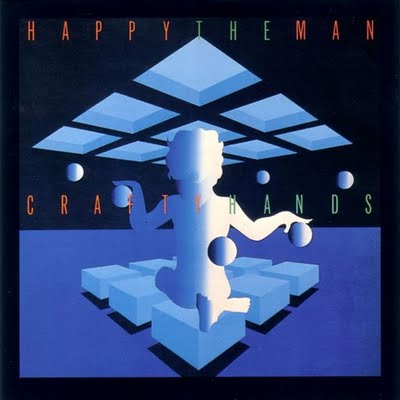 In 1980 Watkins was rebounding from the dissolution of Happy the Man, a Washington-based progressive rock band that was critically acclaimed but achieved only moderate commercial success. Today Kit Watkins is a solo artist who has produced 13 recordings in several genres, fulfilling all capacities — composing, playing and recording the music, designing the cover art and selling the product on his own label, Linden Music.
In 1980 Watkins was rebounding from the dissolution of Happy the Man, a Washington-based progressive rock band that was critically acclaimed but achieved only moderate commercial success. Today Kit Watkins is a solo artist who has produced 13 recordings in several genres, fulfilling all capacities — composing, playing and recording the music, designing the cover art and selling the product on his own label, Linden Music.
Downstairs at his home, one passes Watkins' Yamaha grand piano, which he inherited from his father, on the way to the recording studio, a small space dominated by a wall of electronics. In one corner hangs a variety of percussion instruments, a couple of children's whistles and assorted noisemakers. "I haven't used the whistles in a recording yet," Watkins says, "but I will." Front and center is his newest toy, a Yamaha VL1 Virtual Acoustic Synthesizer, which is triggered by a breath controller and responds like a wind instrument. In the studio, Watkins plays a couple of DATs of recent work. One has a catchy, jazz feel; the other is a pensive piano composition.
Growing up in Harrisonburg, Virginia, Watkins studied piano with his parents, both teachers of the instrument. He learned flute in school. At age 13, he developed an interest in rock, and found his parents more tolerant than most when he asked if he could stop his classical lessons and join a neighborhood band: "My mother said that as long as I was doing music, that would be fine. She even bought me my first Ace Tone portable organ and a Fender amp."
The core of Happy the Man was formed in 1972 by guitarist Stanley Whitaker, saxophonist and keyboard player Frank Wyatt and Watkins, all students at James Madison University. Mostly instrumental, the band's music was inspired by progressive bands of the time, incorporating extensive thematic developments that became the group's trademark. In 1975 Happy the Man moved to the Washington area, where the band received steady support from Georgetown University's radio station, WGTB-FM.
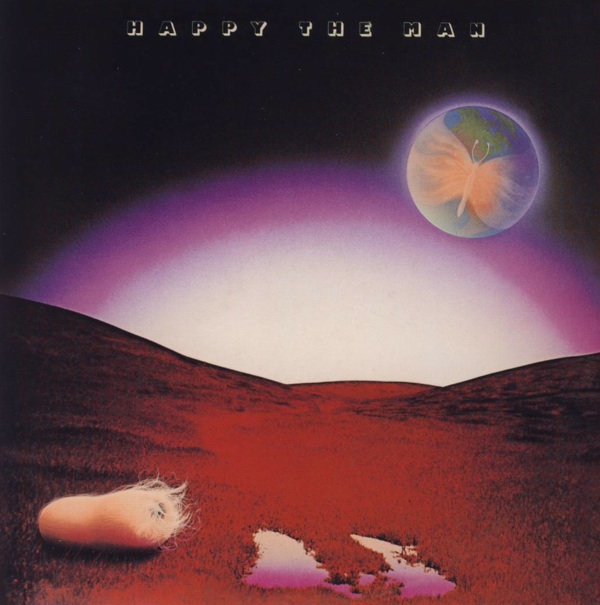 Expecting the band to develop a dependable cult following, Arista Records president Clive Davis signed it to an eight-album contract that year. Working with producer Ken Scott, Happy the Man released a self-titled effort in 1977 and Crafty Hands in 1978. "Scott was a stickler for precision," Watkins recalls. "The down side was that, after 30 takes of a part, the life was often gone." Perhaps for Watkins, but a small cult of fans covets the band's records, especially the Japanese CD reissues, which he says are back on the market after being out of print for some time.
Expecting the band to develop a dependable cult following, Arista Records president Clive Davis signed it to an eight-album contract that year. Working with producer Ken Scott, Happy the Man released a self-titled effort in 1977 and Crafty Hands in 1978. "Scott was a stickler for precision," Watkins recalls. "The down side was that, after 30 takes of a part, the life was often gone." Perhaps for Watkins, but a small cult of fans covets the band's records, especially the Japanese CD reissues, which he says are back on the market after being out of print for some time.
The new wave exploded onto the scene in 1978, erasing any chance Happy the Man had for success. Arista canceled the group's contract after Crafty Hands. The band recorded a third LP, Better Late..., in 1979, then broke up on May 31 of that year when Watkins was asked to join the British band Camel. (Better Late... was released on CD by Cuneiform in 1990.)
Watkins played on Camel's 1980 LP, I Can See Your House from Here, and toured with the group in support of it before leaving in 1981 to work on his first album. Recorded with Coco Roussel, Happy the Man's drummer at the time of the group's dissolution, Labyrinth placed in Keyboard magazine's 1982 readers' poll. Watkins and Roussel played some live shows, accompanied by instrumentation on a reel-to-reel tape recorder.
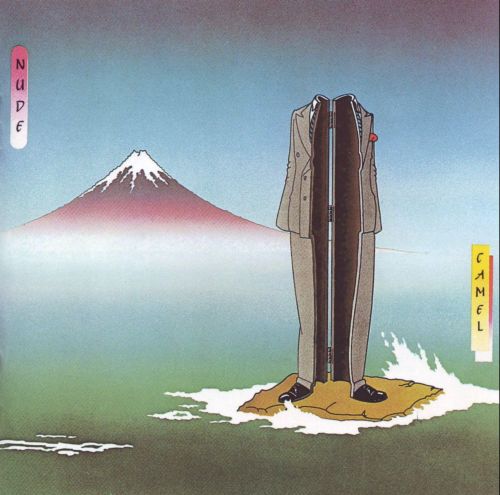 Before retiring from live performing, Watkins toured again with Camel in support of its 1981 album, Nude, and its 1982 release, The Single Factor. Watkins says that working solo deprives him of the interaction of a group, but provides "the freedom to create imaginary ensembles without the concern of leaving someone out or worrying about how to pull it off live." In 1987 Watkins and his partner, Bob Toft, moved from Arlington to their mountain-top home in Linden, Virginia, where they publish a grants newsletter for colleges and universities. The two men designed and built their house themselves.
Before retiring from live performing, Watkins toured again with Camel in support of its 1981 album, Nude, and its 1982 release, The Single Factor. Watkins says that working solo deprives him of the interaction of a group, but provides "the freedom to create imaginary ensembles without the concern of leaving someone out or worrying about how to pull it off live." In 1987 Watkins and his partner, Bob Toft, moved from Arlington to their mountain-top home in Linden, Virginia, where they publish a grants newsletter for colleges and universities. The two men designed and built their house themselves.
Watkins started Linden Music in 1990 as a vehicle for his more esoteric work, such as the two ambient Thought Tones CDs, the environmental collage Circle and a classical album, A Different View. Originally issued by East Side Digital, his other albums — In Time, Azure, SunStruck, and Wet, Dark, and Low, — are now sold under the Linden label.
His complex, sometimes playful compositions are executed with a deft touch and framed by clean production. They embrace classical, rock and tribal elements, and sometimes incorporate noise and found sounds. Watkins takes full advantage of sound-shaping devices, but avoids their overuse. "I don't use effects for effects' sake," he says.
Shortly after the move to Linden, environmental sounds began to show up on Watkins' recordings, starting with Azure. For Circle, he recorded animals, rains, trains and other sounds. The Thought Tones CDs were based on multi-processed recordings of thunder and saw blades, among other things. The results sound nothing like the source material, and, unlike some ambient works, support attentive listening as well as they function as background music.
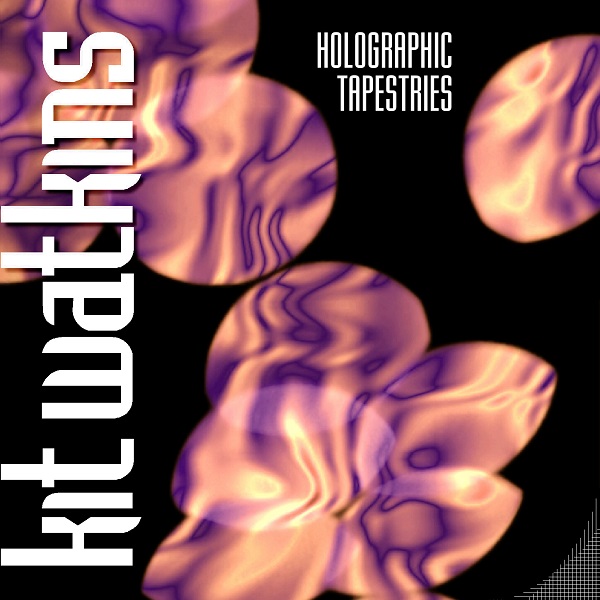 Holographic Tapestries is divided into two interleaved sets. Odd-numbered cuts drift introspectively, while even-numbered selections are more extroverted and rhythmic. The CD booklet includes verses and artwork that complement the selections. Partly due to fans' reactions to Holographic Tapestries, Watkins now partitions his work into more homogeneous sets, so listeners can pick one type of music or the other.
Holographic Tapestries is divided into two interleaved sets. Odd-numbered cuts drift introspectively, while even-numbered selections are more extroverted and rhythmic. The CD booklet includes verses and artwork that complement the selections. Partly due to fans' reactions to Holographic Tapestries, Watkins now partitions his work into more homogeneous sets, so listeners can pick one type of music or the other.
The recently released Beauty Drifting consists of introspective, mostly solo acoustic piano pieces, augmented with samples, electronics, electric piano and VL1. Watkins is pleased with the album, saying, "It has a certain organic quality. The sound of the acoustic piano is so great. There are things I couldn't write on an electric piano."
Watkins is working on professional CDs of sounds that musicians can sample. The first contains a lot of ambient material, while the second, which will include Coco Roussel, will focus on rhythm. Several projects in various stages of development are in the running for Watkins' next release. He is working on some "jazz landscapes," similar to Wet, Dark and Low, but with a more abstract feel. He is considering a solo flute project that will involve recording the instrument in a variety of ways. With "the flute as the limit," Watkins expects this effort to test his resourcefulness. Finally, he might release a "world tuning album," based on tuning schemes employed by different cultures. "Working with non-Western tunings is jarring me into thinking a different way," he says. Watkins tends to let his various projects run their own courses until one emerges that's close to completion.
His method of composition reflects Watkins' "quest to reach into something that's a lot deeper than just me." He says, "I premeditate certain things, but when I [ compose], I don't have a feeling of where it's going. I don't sit down and think cerebrally, 'I want to write a jazz piece in 11/8.' In fact, I usually write the music, then the title."
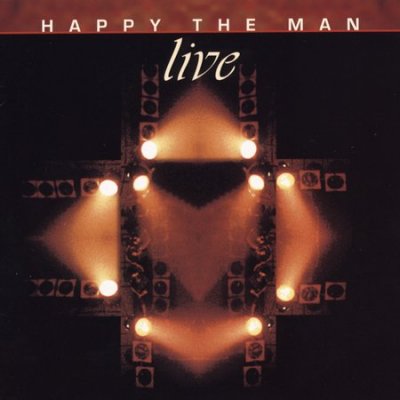 Watkins, Wyatt and Whitaker discussed recording a new Happy the Man album in early 1994, and decided the only practical method was to trade DATs and MIDI files by mail. By June 1994 Watkins saw that the project wasn't proceeding satisfactorily, and quit to record Holographic Tapestries. It's doubtful that the three will ever produce an album, but Watkins, like an evil twin, fantasizes doing a plunderphonic number on the old Happy the Man LPs. Many fans yearn for a Happy the Man reunion, but the fact is that Watkins passed down that road long ago; he, Wyatt and Whitaker are different people, doing different things; and a new Happy the Man would surely have a different feel. To those who prefer to dwell on the past, Watkins paraphrases the late John Lennon, saying, "The albums are there. Go back and listen to them."
Watkins, Wyatt and Whitaker discussed recording a new Happy the Man album in early 1994, and decided the only practical method was to trade DATs and MIDI files by mail. By June 1994 Watkins saw that the project wasn't proceeding satisfactorily, and quit to record Holographic Tapestries. It's doubtful that the three will ever produce an album, but Watkins, like an evil twin, fantasizes doing a plunderphonic number on the old Happy the Man LPs. Many fans yearn for a Happy the Man reunion, but the fact is that Watkins passed down that road long ago; he, Wyatt and Whitaker are different people, doing different things; and a new Happy the Man would surely have a different feel. To those who prefer to dwell on the past, Watkins paraphrases the late John Lennon, saying, "The albums are there. Go back and listen to them."
Watkins has stopped selling his releases through record stores, and now deals only by direct-mail, an avenue that keeps him in touch with fans. "I get a lot of supportive letters from people because of the mail-order and that's really important," he says. "I always create music for both myself and an imaginary audience. I don't know that I've ever created music without the thought that at least one person other than myself will hear it."
To complete his turn away from the conventional music business, Watkins will produce future Linden releases on his CD recorder, one unit at a time. He may release a "signature series" of compilations, each produced entirely at home and personally signed. Watkins likens these to limited-edition prints by visual artists.
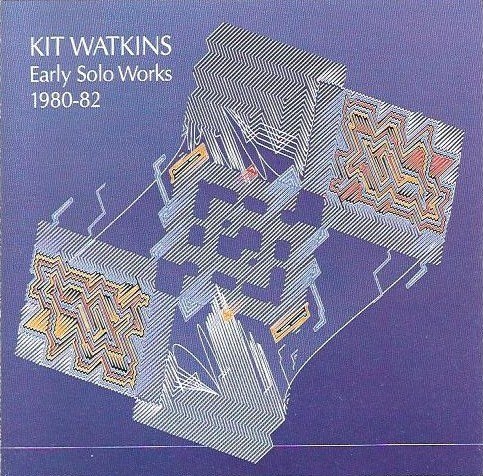
But initially he plans to release his first two albums, Labyrinth and Frames of Mind, on separate CDs. The Early Solo Works CD combined all of Labyrinth and part of Frames of Mind. The new releases will be remastered and will contain bonus tracks.
He wishes that sales permitted him to pursue music full-time, but Watkins is thankful he can make music that pleases him. "Ironically, more successful musicians are also more confined," he says. With modest but steady sales of each release, regardless of genre, Watkins can change musical directions at will. Asked about his current release, Watkins responds with comments about his next project. "I'm always thinking about the future, thinking about the next one," he says. At the same time, he keeps all his past recordings in print. Although his projects proceed at different paces — the Thought Tones CDs were completed in weeks, while Holographic Tapestries took over a year — Watkins says he "[doesn't] like to have long lapses between releases. Ideally, I'd like to have an album out every year or two. It's what makes me tick."
Filed under: Profiles, Issue 10
Related artist(s): Stan Whitaker, Frank Wyatt, Happy the Man, Coco Roussel, Kit Watkins
More info
http://www.kitwatkins.com
What's new
These are the most recent changes made to artists, releases, and articles.
- Review: Roz Vitalis - Dedication to BigNick
Published 2026-01-18 - Review: Olly Chalk - In Those Remote Stars
Published 2026-01-17 - Review: Jeff Pearce - Infinite Ambient: Winter Landscapes
Published 2026-01-16 - Release: Nektar - Mission to Mars
Updated 2026-01-15 11:59:57 - Release: Mordecai Smyth - Gather the Scattered Mind
Updated 2026-01-15 11:52:38 - Review: Trio of Bloom - Trio of Bloom
Published 2026-01-15 - Review: Barry Cleveland & Robert Rich - Elliptical Passage
Published 2026-01-14 - Release: Orchestra of the Upper Atmosphere - θ2
Updated 2026-01-13 23:09:38 - Release: Orchestra of the Upper Atmosphere - θ3
Updated 2026-01-13 23:07:05 - Release: Orchestra of the Upper Atmosphere - θ6
Updated 2026-01-13 22:55:18 - Release: Orchestra of the Upper Atmosphere - θ5
Updated 2026-01-13 22:52:03 - Release: Orchestra of the Upper Atmosphere - θ4
Updated 2026-01-13 22:47:05 - Release: Barry Schrader - Ambient : Aether
Updated 2026-01-13 22:29:29 - Review: Trinary System - The Hard Machine
Published 2026-01-13 - Release: Camahueto - Reflejos
Updated 2026-01-12 23:44:45 - Artist: Camahueto
Updated 2026-01-12 23:41:18 - Release: Danza de la Ira - Septies Kairos
Updated 2026-01-12 23:03:00 - Artist: Danza de la Ira
Updated 2026-01-12 22:56:20 - Release: Orchestra of the Upper Atmosphere - Orchestra of the Upper Atmosphere
Updated 2026-01-12 16:14:44 - Release: Orchestra of the Upper Atmosphere - θ7
Updated 2026-01-12 16:13:34
